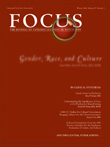Surgical Nonpsychiatric Medical Treatment of Patients With Body Dysmorphic Disorder
Abstract
It appears that many individuals with body dysmorphic disorder (BDD) receive nonpsychiatric medical treatment and surgery; however, this topic has had little systematic investigation. This study assessed the nonpsychiatric treatment sought and received by 289 individuals (250 adults and 39 children/adolescents) with DSM-IV BDD. Such treatment was sought by 76.4% and received by 66.0% of adults. Dermatologic treatment was most often received (by 45.2% of adults), followed by surgery (by 23.2%). These treatments rarely improved BDD symptoms. Results were similar in children/adolescents. These findings indicate that a majority of patients with BDD receive nonpsychiatric treatment but tend to respond poorly.



